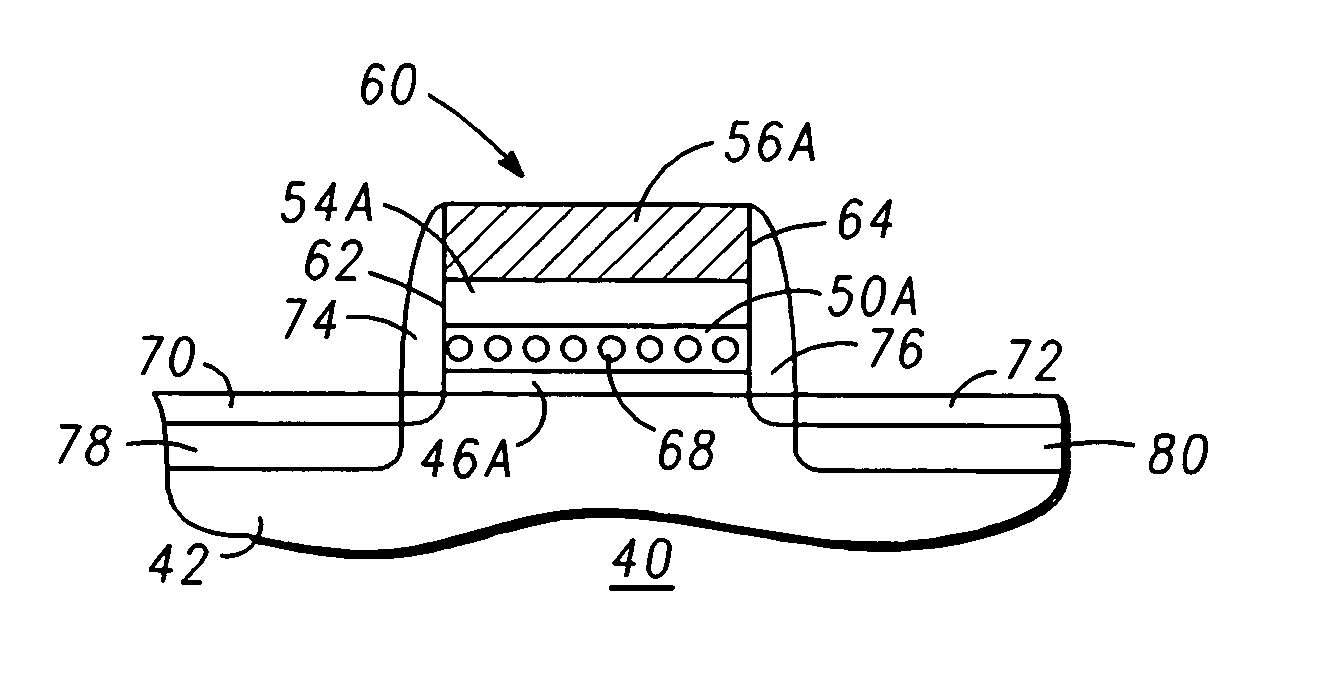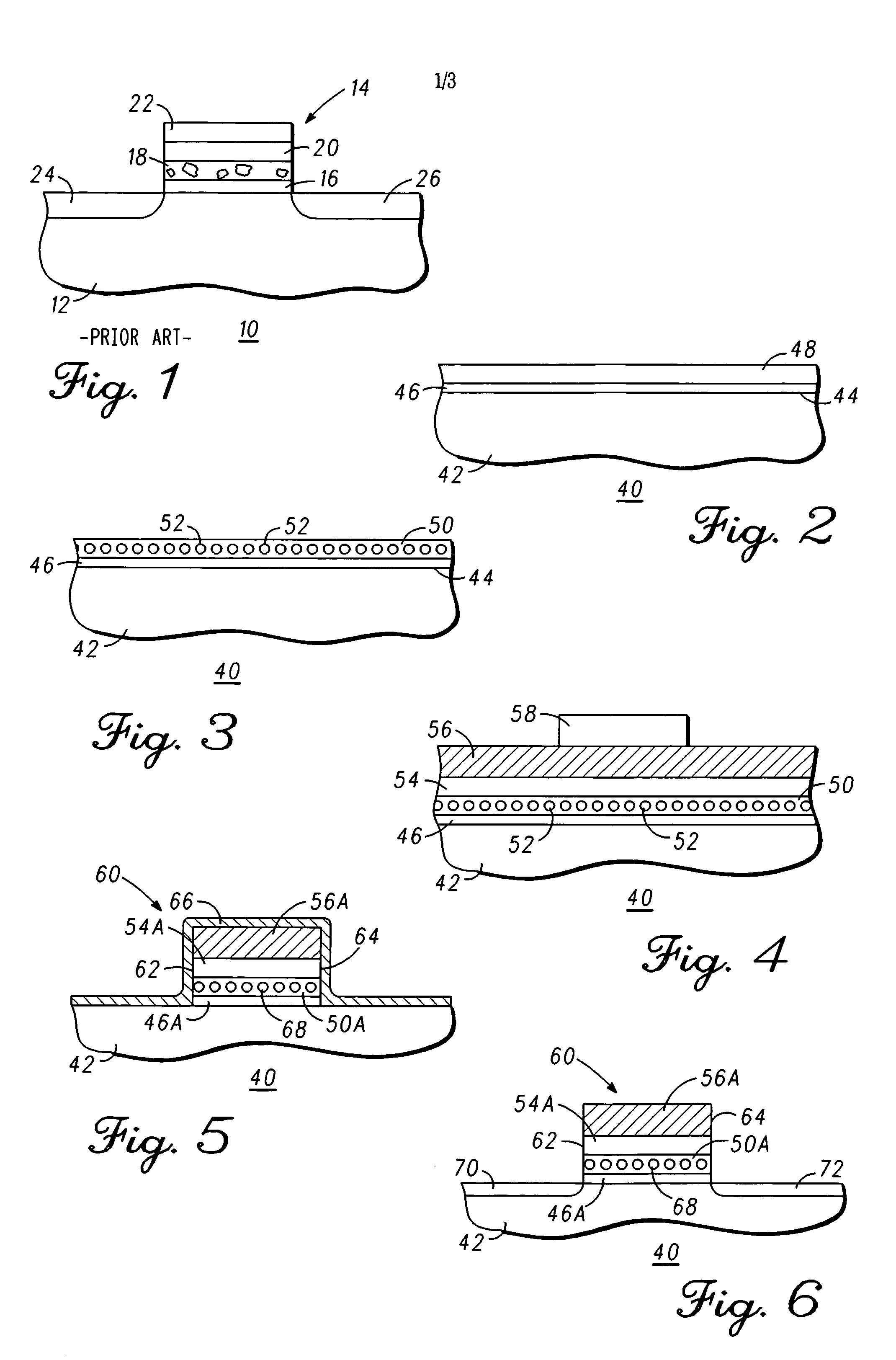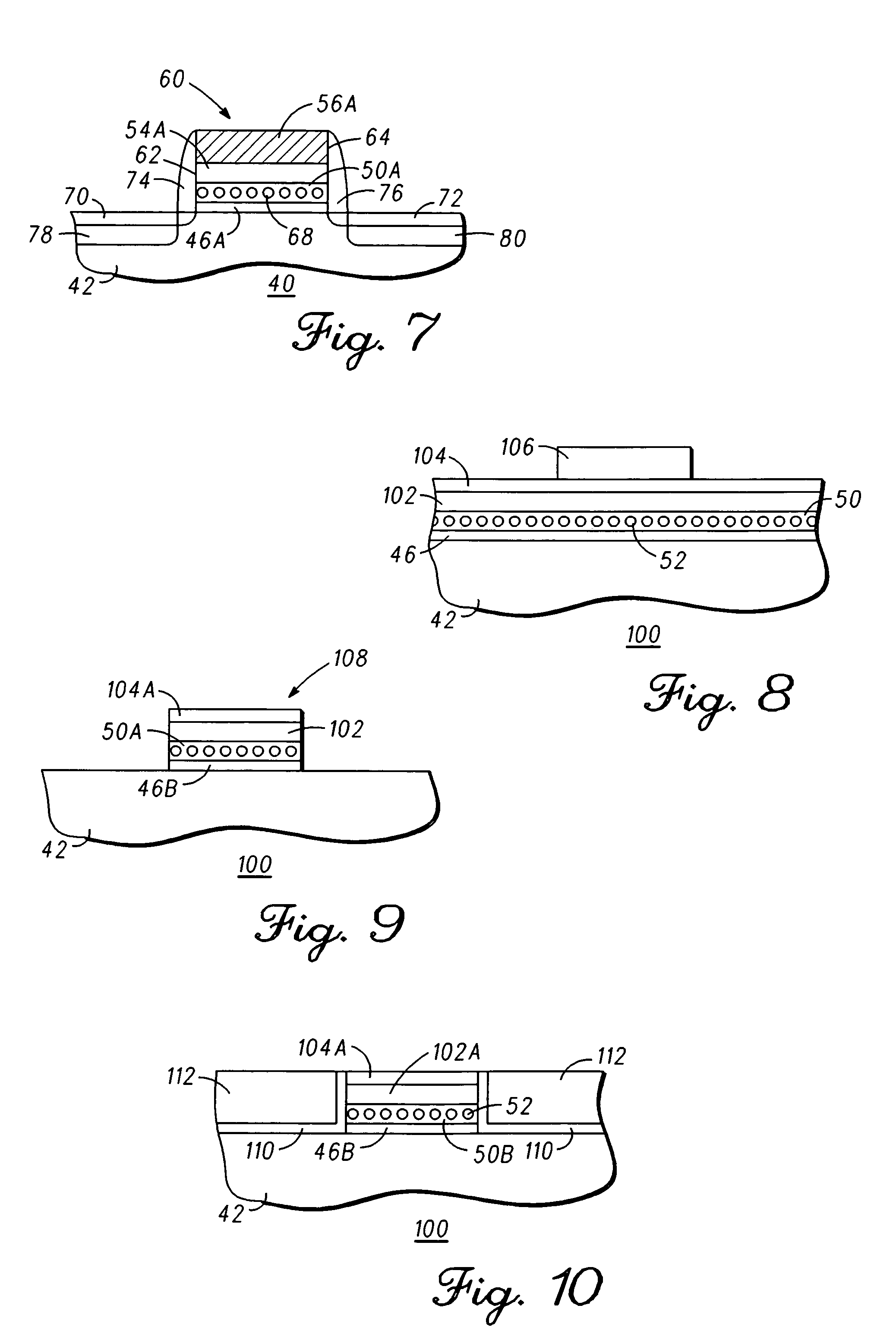Memory device having a nanocrystal charge storage region and method
a memory device and nanocrystal technology, applied in the field of memory devices, can solve the problems of large variation in the size distribution of nanocrystals, the device is not able to retain stored data or instructions when the device is turned, and the memory device is a volatile devi
- Summary
- Abstract
- Description
- Claims
- Application Information
AI Technical Summary
Problems solved by technology
Method used
Image
Examples
Embodiment Construction
[0024]FIG. 2 is an enlarged cross-sectional side view of a portion of a partially completed memory device 40 during processing in accordance with an embodiment of the present invention. What is shown in FIG. 2 is a semiconductor substrate 42 having a major surface 44. Suitable materials for substrate 42 include silicon, germanium, Semiconductor-On-Insulator (SOI), silicon germanium, gallium arsenide, indium phosphide, other compound semiconductor materials, or the like. The semiconductor material may also be a semiconductor substrate having an epitaxial layer formed thereon. A layer of dielectric material 46 having a thickness ranging from about 20 Angstroms (Å) to about 50 Å is formed on substrate 42. By way of example, layer of dielectric material 46 is oxide grown by dry oxidation. It should be noted that the type of dielectric material for dielectric layer 46 and the technique for forming dielectric layer 46 are not limitations of the present invention. A layer of dielectric mat...
PUM
| Property | Measurement | Unit |
|---|---|---|
| temperature | aaaaa | aaaaa |
| thickness | aaaaa | aaaaa |
| temperature | aaaaa | aaaaa |
Abstract
Description
Claims
Application Information
 Login to View More
Login to View More - R&D
- Intellectual Property
- Life Sciences
- Materials
- Tech Scout
- Unparalleled Data Quality
- Higher Quality Content
- 60% Fewer Hallucinations
Browse by: Latest US Patents, China's latest patents, Technical Efficacy Thesaurus, Application Domain, Technology Topic, Popular Technical Reports.
© 2025 PatSnap. All rights reserved.Legal|Privacy policy|Modern Slavery Act Transparency Statement|Sitemap|About US| Contact US: help@patsnap.com



